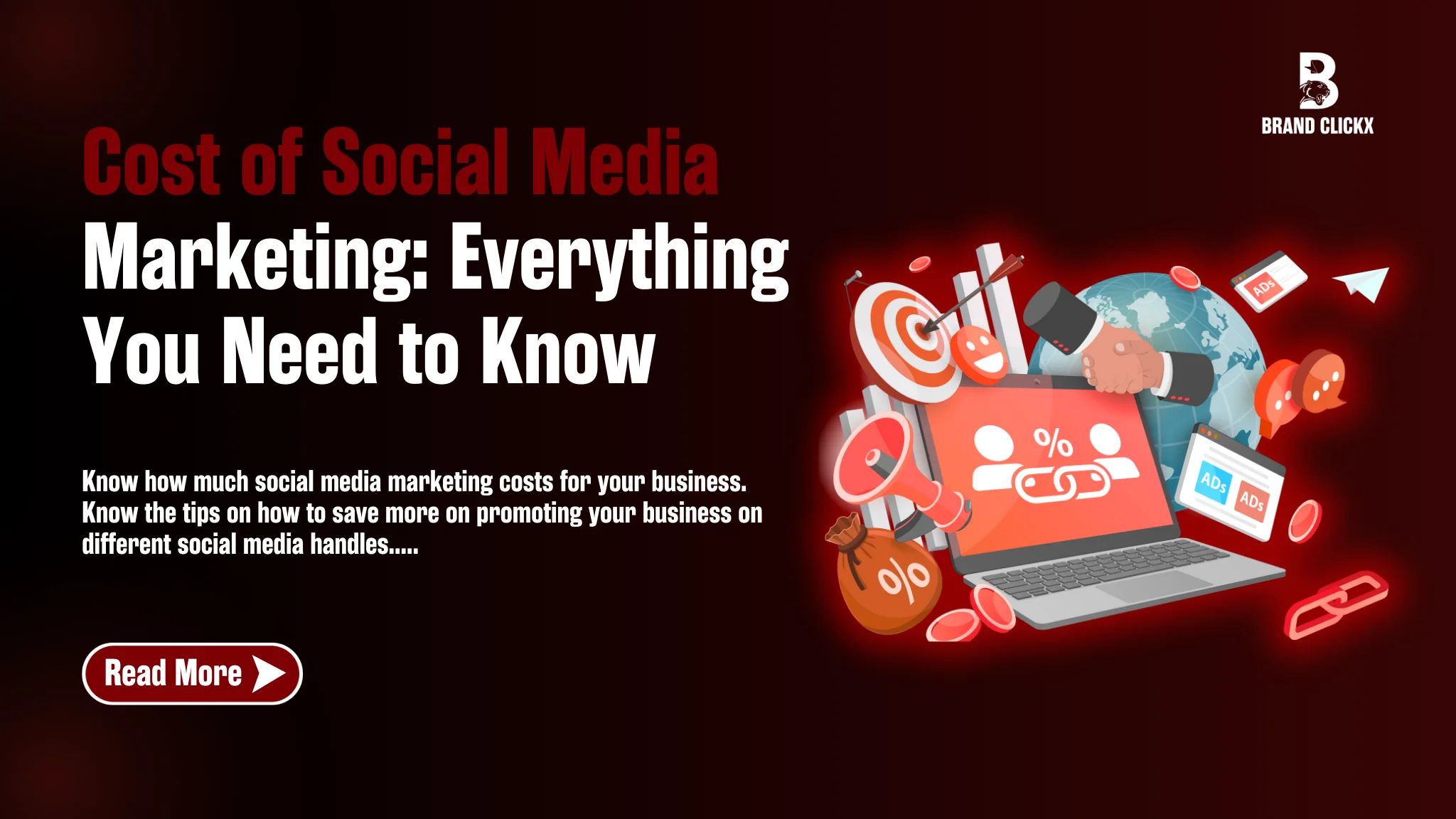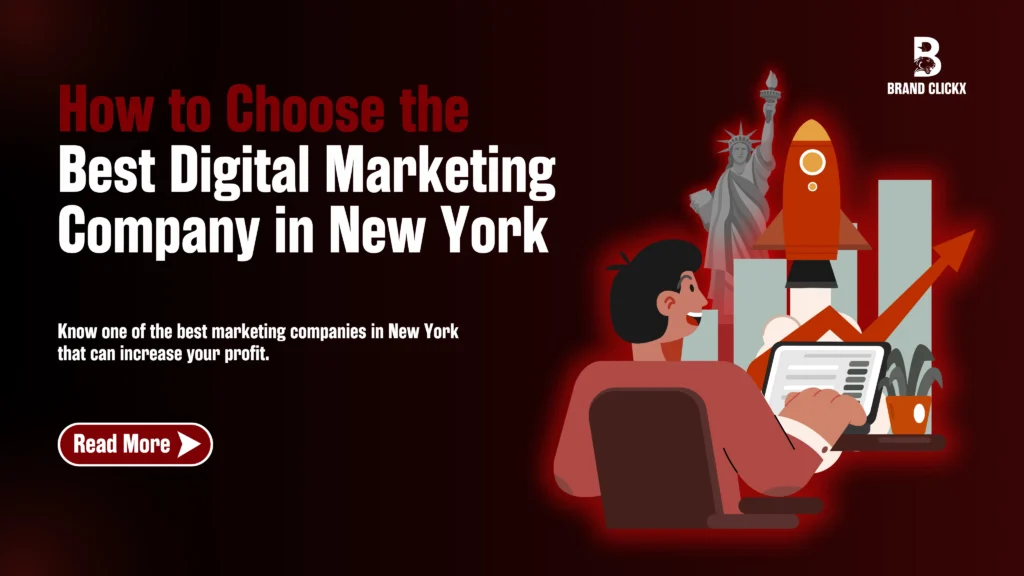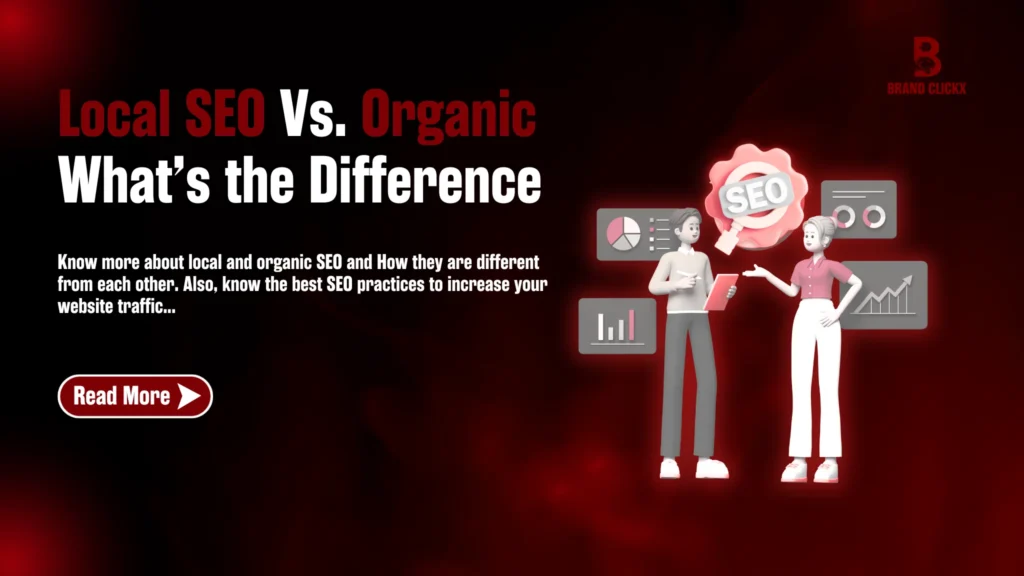Imagine you’ve got a brilliant product, a solid business plan, and a vision to scale. But remember, you’re competing in a world where attention is the most expensive currency. Social media seems like the golden ticket to growing your business, but as an entrepreneur or founder, the one burning question is, “How much social media marketing cost do I have to bear?”
We get it. Whether you’re a level one startup, a growing small business, or an established brand, every dollar matters. You don’t want to spend blindly, especially when marketing budgets are tight. Yet, skipping social media isn’t an option when billions of people are scrolling through it daily.
In this guide, we’ll break down how much social media marketing costs. From DIY strategies to hiring agencies, we’ll cover what it takes to see actual ROI without overloading your wallet. If you’ve ever felt overwhelmed by the endless pricing models or frustrated by vague promises, you’re in the right place.
Let’s start without delaying another second!
Factors which Increase the Social Media Marketing Costs
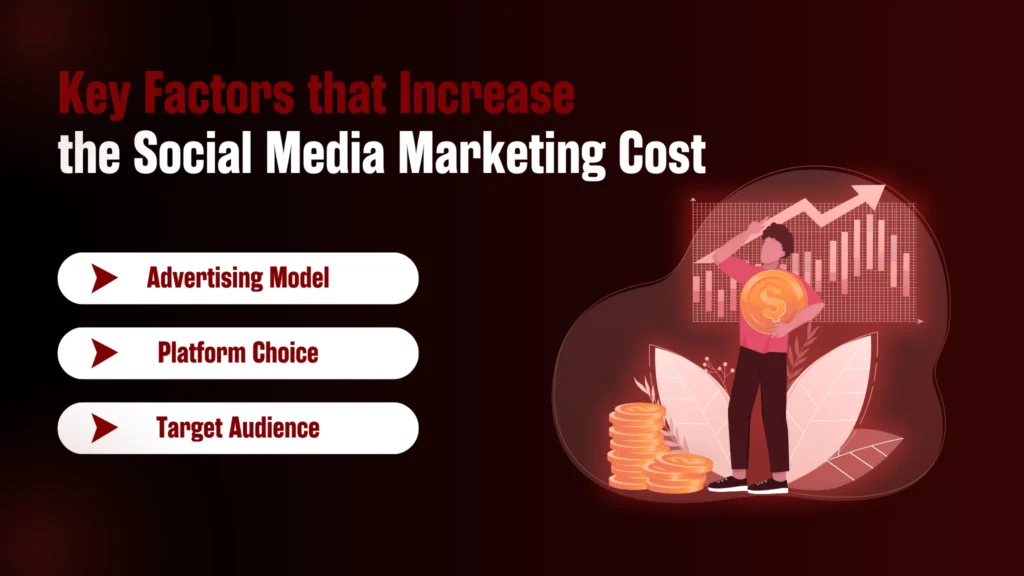
Let’s talk about these factors on which increases the social media marketing costs:
Advertising Models: CPC vs. CPM–Which Should You Bet On?
You have two main options while running paid ads: CPC (cost per click) and CPM (cost per 1,000 impressions). If you’re looking to generate leads, CPC is your go-to—but it’s not cheap. On the other hand, CPM helps you build brand awareness but might not guarantee conversions. Choosing the wrong model can blow your budget fast, so understanding your business goals is crucial.
Platform Choice: Facebook, Instagram, or LinkedIn?
Not all platforms are created equal. For instance, LinkedIn might be perfect for B2B businesses, offering laser-focused targeting—but it comes at a premium. In contrast, Facebook and Instagram are cost-effective for businesses aiming for broader reach, thanks to Meta Ads. Picking the right platform can make or break your ROI.
Target Audience: The More Specific, The More Expensive
Here’s the trade-off: The more specific your audience, the higher the cost. Niche targeting can help you connect with high-intent buyers, but it’s not cheap. If your goal is precision, prepare to invest more—especially in industries with heavy competition for eyeballs. On the flip side, broader targeting may reduce costs but could dilute your results.
Hidden Costs: More Than Just Ads
Social media marketing doesn’t stop at running ads. You’ll need engaging content, visually striking designs, and consistent posting to keep your audience hooked. Hiring a team or agency to handle these tasks can add up quickly. And the more frequently you post, the higher the costs for content creation and scheduling tools.
You have to choose the agency’s package plans that include everything.
3 Key Components of Social Media Marketing Costs

Breaking down social media marketing costs into categories helps you see where each dollar goes. These categories cover advertising, content creation, and tools for tracking performance, all of which contribute to your overall spending.
Advertising Costs
Social media platforms let you control your ad budget by offering daily, weekly, and monthly campaign plans. But here’s the kicker: choosing the right duration depends entirely on your goals. Are you testing the waters or going all in for a product launch?
- CPC: Paying for Clicks That Matter
Cost-per-click (CPC) charges you every time someone clicks on your ad–whether it’s to visit your site, make a purchase, or connect on WhatsApp. Rates vary across platforms, but CPC is perfect for driving high-quality traffic. However, be prepared: this model can get expensive fast, especially in competitive industries.
- CPM: Getting Eyeballs on Your Brand
Cost-per-thousand impressions (CPM) charges you for every 1,000 times your ad is displayed. If your goal is visibility without expecting immediate actions, CPM is the way to go. Think of it as the digital billboard of advertising—great for awareness, but it lacks direct engagement.
- Budget Control Options: Smart Spending Made Easy
Platforms like Facebook and Instagram offer tools to set spending caps and bid limits, ensuring you stay within your budget. These features are lifesavers when you want to maximize ROI without overspending.
Content Creation Costs: The Backbone of Your Strategy
Running ads is just one piece of the puzzle. To truly engage your audience, you need compelling content that keeps them coming back. The cost of content creation depends on how often you post, the type of content you need, and the level of quality you aim for.
- Visual Content: First Impressions Matter
High-quality visuals grab attention and build trust. Whether you hire a graphic designer or work with an agency, visual content is an investment in your brand’s credibility. Agencies often bundle graphic design services into their social media packages, which can save social media marketing costs in the long run.
- Copywriting: Words That Convert
A scroll-stopping caption or a cleverly written post can turn casual scrollers into loyal customers. Professional copywriting is usually included in social media packages offered by agencies, making it a hassle-free option for busy entrepreneurs.
- Video Production: The ROI King
Video content is the star of social media algorithms, and for good reason–it’s engaging, shareable, and keeps viewers hooked. While video production can be pricey, the returns often justify the expense. Think Instagram Reels, YouTube shorts, or TikTok videos that leave a lasting impression.
Pro Tip: Content creation may seem like a big upfront cost, but it works long after your ads stop running. It’s an investment in building a community, not just sales.
Tracking: The Leading Factor to Your Success
Tracking your results is like having a GPS for your strategy—it tells you what’s working and what’s not. Social media platforms provide built-in analytics, but if you want deeper insights, premium tools are the way to go.
Basic Metrics: The Essentials
Built-in analytics on platforms like Instagram and Facebook let you track likes, comments, shares, and ad performance. It’s a solid starting point for monitoring engagement and tweaking campaigns.
Advanced Reporting: Going Pro
For detailed insights, tools like Hootsuite, Sprout Social, and Buffer offer advanced analytics. These tools provide data on everything from audience behavior to ROI, helping you refine your strategy for maximum impact.
Why It Matters: Tracking ensures your money isn’t wasted on strategies that don’t work. It’s your roadmap to making smarter decisions and achieving better results.
Differences Between Social Media Platforms
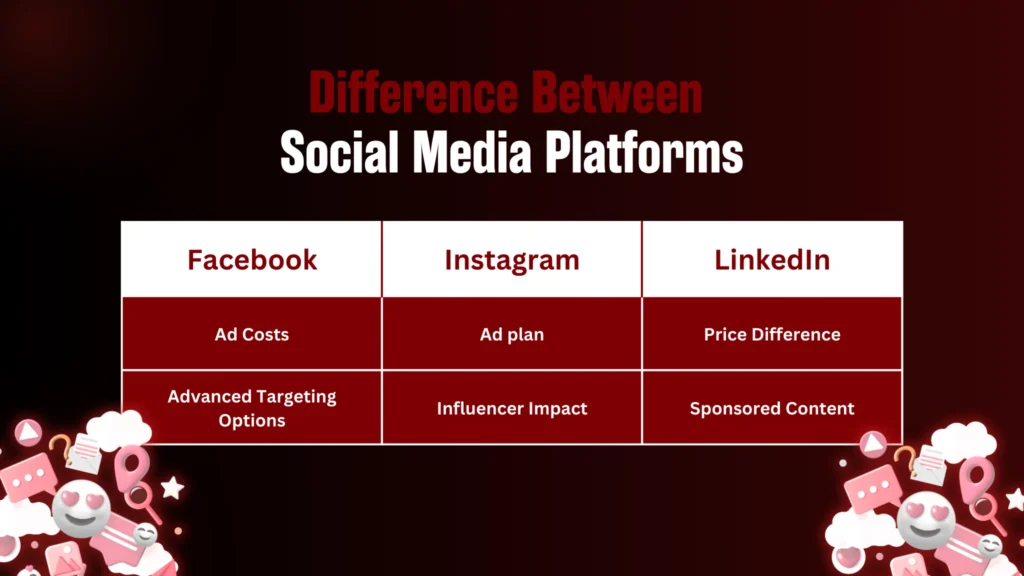
Different social media platforms have unique advertising costs and appeal to specific audiences. Understanding these platforms’ differences can help you choose the platform that perfectly aligns with your business.
Facebook is one of the most well-known platforms for social media usage and marketing. Facebook has more audience than any other social media platform, and many industries prefer it due to the following features:
Ad Costs:
Facebook offers CPC and CPM models that allow businesses to control spending while reaching the maximum audience. Its affordable plans make it the first choice for small and mid-range companies.
Advanced Targeting Options:
Facebook’s targeting features allow businesses to narrow their audience by location, interests, and behaviour, though this precision can raise the overall ad cost if targeting a niche audience.
With its emphasis on photos, videos, and dynamic content, Instagram is the go-to platform for brands in lifestyle, fashion, beauty, and food. Its younger, trend-focused audience makes it perfect for brands looking to stay modern and creative.
Ad plan:
Instagram offers a sponsored post option based on the post format. The popular types on Instagram are stories, reels and carousel ads.
Influencer Impact:
Many influencers on Instagram offer alternate ads while promoting your business through their post and stories. The cost changes with the followers they have to the engagement they get. It is a costly but audience-focused option.
LinkedIn focuses on B2B businesses and industries such as tech, recruitment, and finance. LinkedIn is an expensive social media platform. It is used only by total-fledged professionals and decision-makers.
Price Difference :
LinkedIn’s CPC and CPM prices are higher than those of any other social platform, but its effectiveness in targeting the audience and companies makes it worth the investment. Only B2B owners prefer this platform for marketing.
Sponsored Content:
LinkedIn offers in-mail and video ad options that allow you to create a conversion-driven campaign with professional B2B owners and engage the audience for better reach.
How to Choose the Right Platform for Your Business
Ask Yourself These Questions:
- Who is your target audience?
- What are your marketing goals—awareness, engagement, or conversions?
- How much are you willing to spend?
Quick Cheat Sheet:
- If you want mass reach and affordability: Facebook
- If you’re a visual-first brand targeting younger audiences: Instagram
- If you’re in B2B and need to connect with professionals: LinkedIn
Social Media Manager and Agency Costs
Hiring an agency or social media manager for your marketing is a game changer. Hiring experts for social media marketing will improve the result and reduce the cost you can bear in testing.
Here’s a breakdown of how much an agency or a social media manager charges:
- Freelance manager:
If you have a small business and a budget that is too low, you must go with a freelance social media manager. A freelance manager charges about 15$ to 75$ per hour, and they didn’t work for 25/7, but they are affordable.
- SMM Agencies:
The agency charges every month, and their prices are high. Still, they give the best result ever, and an agency is available 24/7 for your service/ They provide analytics and content strategy for long-term success. An agency charges a minimum of 800$ to 2000$ depending on your requirements. Most importantly, they offer packages that include content creation, social media management, reporting, updates, and strategy building.
- Custom Content Packages:
Many agencies offer custom plans in which you can choose the services you want according to your needs and budget. You can add more services or remove the unwanted services to custom-build a plan that fits your business.
Tips on Handling Your Social Media Marketing Costs
| Tip | Key Points | Pro Tip |
| Set Clear Goals | Define objectives (awareness, traffic, leads, sales) and assign KPIs to track progress. | Assign specific KPIs like impressions for awareness or cost-per-lead for lead generation. |
| Break Down Your Budget | Categorize expenses: ads, content, tools, team. Allocate 10-15% as a buffer for unexpected costs. | Use spreadsheets or budgeting tools to track allocation. |
| Choose the Right Platforms | Focus on platforms where your target audience spends the most time. | Start with one or two platforms, then scale based on results. |
| Use Budgeting Tools | Set daily or lifetime ad budgets, bid caps, and schedules using platforms like Facebook Ads Manager. | Try tools like Hootsuite or Buffer for additional tracking and control. |
| Monitor Performance Regularly | Track metrics like CTR, CPC, engagement, and ROI. Adjust strategies based on performance insights. | Conduct weekly reviews to ensure your campaigns are on track. |
| Optimize Content Creation | Batch create, repurpose content, and use affordable tools (e.g., Canva for design, Grammarly for writing). | Reuse high-performing posts across multiple platforms. |
| Test and Experiment | A/B test ads, creatives, and CTAs. Allocate 5-10% of your budget for trying new strategies or platforms. | Use testing to refine your audience and messaging. |
| Outsource When Necessary | Hire freelancers or agencies if managing campaigns feels overwhelming. | Ensure agency fees align with your budget and deliver measurable results. |
| Avoid Common Mistakes | Don’t over-invest in one platform, neglect organic content, or ignore analytics. | Balance paid and organic strategies for long-term success. |
Conclusion
Social media marketing can drive real growth for your brand, but it takes careful planning to make the most of your budget without adding up additional social media marketing costs. Knowing what affects costs, like ad formats, content creation, and platform choices, helps you make smart decisions that boost results without overspending. Start with a smaller budget, see what performs best, and gradually put more into areas that deliver.
A clear social media budget helps you spend wisely on ads, quality content, and the right platforms. Regularly check and adjust based on performance, which can increase returns and keep your budget on track. If you are looking for someone to takecare of your social media marketing without exceeding the budget, BrandClickX is your savior! Contact us to discuss in details.
FAQs
1. Can I start social media marketing with 100$?
Yes, you can start with 100$ for ad testing. This lets you understand your audience’s response before committing to a more considerable spend.
2. Which platform should I choose as a small business owner?
If you have a low budget, we would prefer to go with Facebook. This platform offers flexible budgeting options, with relatively low CPC rates and a large audience base, making them a good starting point.
3. Is it necessary to use paid tools for social media management?
Not necessarily. Many platforms offer free analytics tools, and there are free versions of scheduling and reporting tools. You can start with these and consider premium options as your strategy grows.
4. How can I reduce my social media marketing costs while improving reach?
Start by refining your audience targeting, focusing on a niche audience likely to engage. Also, experiment with different ad formats, such as video, which often gets better engagement at a lower cost.
5. Can I see immediate results from my social media marketing efforts?
Social media marketing usually requires time to build momentum. You may see some engagement immediately, but consistent growth, brand awareness, and conversions generally take a few months of sustained effort.

